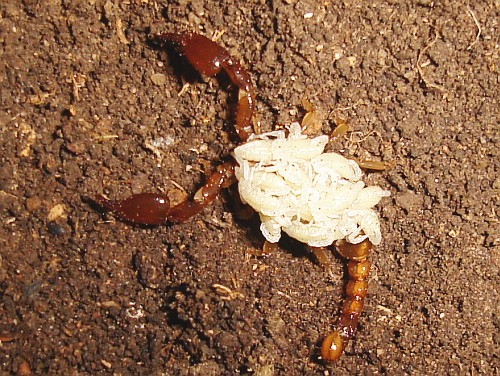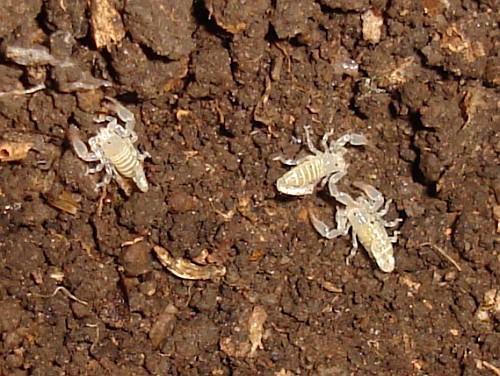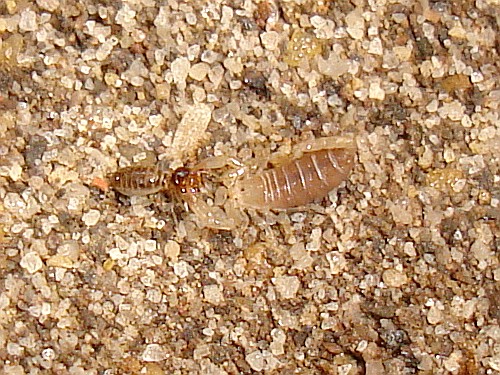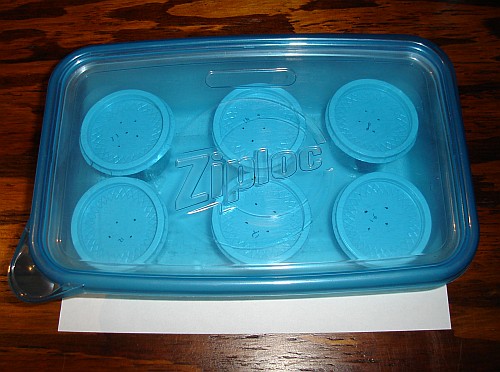

Today I fed ground termites to juvenile scorpions (Diplocentrus bereai, Armas & Martin-Frias, 2004) and took some photos of the set up I use to keep them alive and healty.

The scorpions were born in July, 2006. I captured the mother back in December 2005, on our walk near Otates (see also A new scorpion). This Diplocentrus species is very small, the female measures from the head to the start of the first tail segment about 12 mm. It's also very secretive, I rarely see it out from under the stone it's hiding under, even when it's dark. Since the mother has been alone in an enclosure since Decmber 2005 we probably captured her pregnant or at least she had mated (scorpions are able to store sperm for some time). Parthenogenesis, a form of reproduction in which an unfertilized egg develops into a new individual, occurs in a few scorpion species, as far as I know, so I guess it's safe to assume that this scorpion had mated.

The first photo was taken after 1 AM on July the 22th, 2006. You can clearly see the newly borns riding on the back of the mother. The second photo was taken a week later.
In August the babies started to leave the mother more and more often and wander around by themselves. The 12th of August, 2006 I decided to separate the juveniles to prevent them from eating each other. I used small plastic cups with a diameter of 6 cm, and a height of 4.5 cm. As a substrate I used 1 cm of fine sand, and a thin small piece of wood was used to provide a hiding place. I sprayed the sand lightly with some water to provide sufficient moisture. With a hot needle I made 4 small holes in each plastic lid to provide some ventilation.

However, after some time I discovered that the juveniles starting to die, probably due to not enough moisture. I moved the cups containing the 6 surviving scorpions out of the total of 17 I isolated to a plasic Ziploc box. About once a week I check the Ziploc box and keep the bottom moist by spraying it a little with water. I also spray the lids of the cups, and some water is able to enter the cups through the holes. This way the sand in each plastic cup stays quite moist, and each small piece of wood as well, which seems to be the right environment for this species.

I feed the scorpions recently born house crickets and ground termites. In the above photo you can see a Diplocentrus bereai holding a ground termite. I captured several ground termites during our walk in Molcaxac, Puebla, especially to feed those tiny scorpions.

As for the temperature, in the cold months (roughly December - March) the temperature in our house can drop as low as 14 degrees Celcius. And in the hot months, 28 degrees Celcius is not uncommon. I guess that the average temperature inside the box is about 26 degrees Celcius during the day and drops to about 24 degrees Celcius during the night.